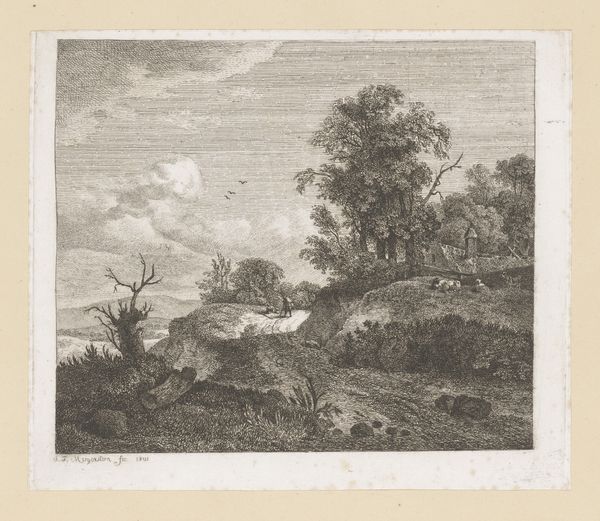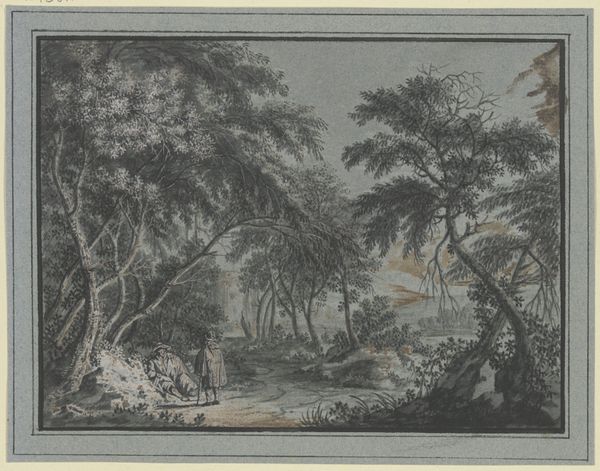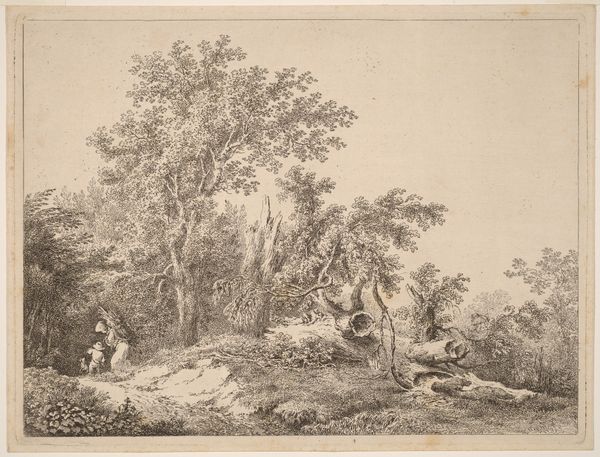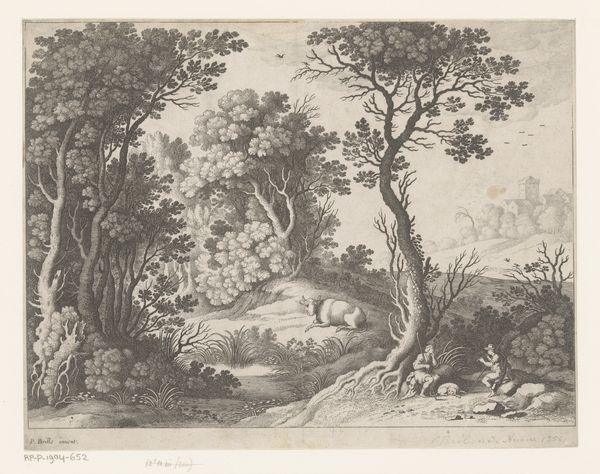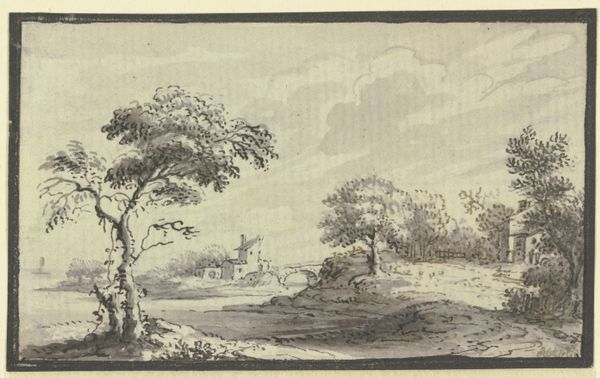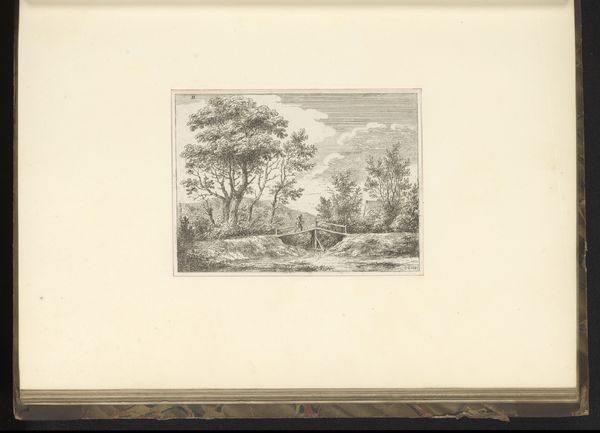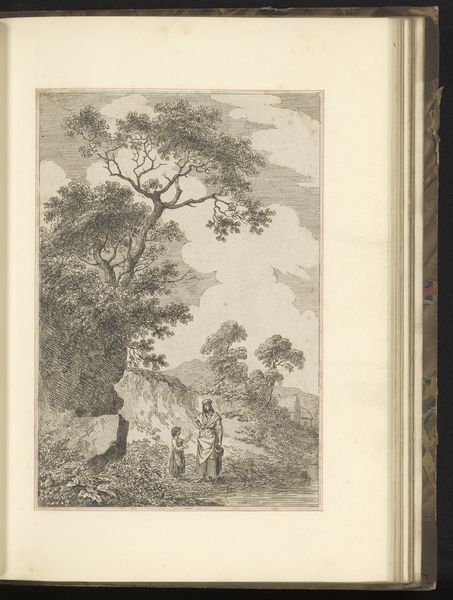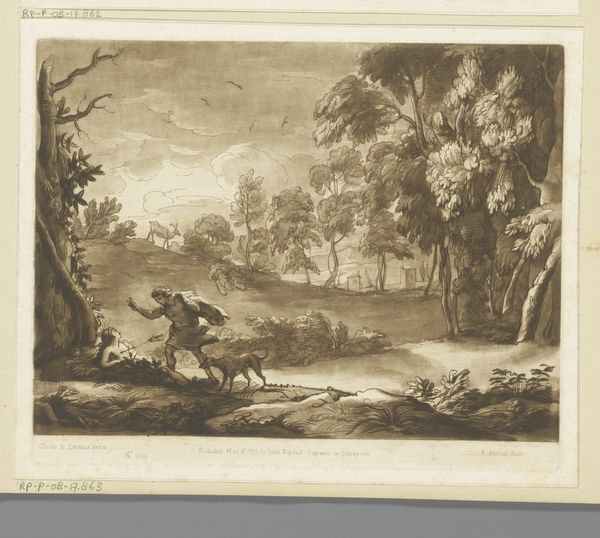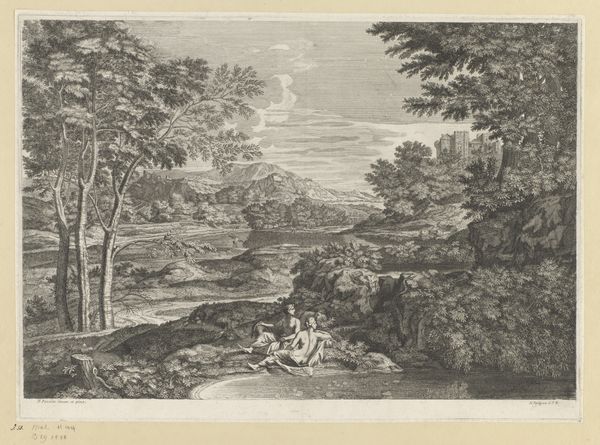
Dimensions: height 221 mm, width 286 mm
Copyright: Rijks Museum: Open Domain
Editor: This etching, "Landschap met rustende figuren," by Edward Edwards, dates back to between 1748 and 1806. The figures resting in this idyllic setting create a very tranquil mood. How would you interpret the formal elements in this piece? Curator: Notice the emphasis on line and texture to create depth and volume. Observe how Edwards uses cross-hatching and varied line weights to build up the foliage, the landforms, and even the atmospheric quality of the sky. Consider also the composition, how the artist directs our eye through the work, from the foreground figures into the receding landscape. Do you see how the path leads toward the distant tower? Editor: Yes, the path really pulls you in, creating a sense of scale. I'm interested in how the light is handled, the subtle gradations... Curator: Exactly. The way Edwards manipulates light and shadow contributes significantly to the romantic feeling of the work. Light isn't used to merely illuminate, but to create a certain mood and evoke emotion. We can talk about the interplay of horizontals and verticals - how they support the pictorial structure. Note that horizontality of the landscape suggests stillness, whereas the verticals of the trees establish a powerful rhythm. Editor: That's insightful. The structure almost acts as a stage for this scene, containing it and inviting you in. Curator: Precisely. By isolating the formal elements, the viewer's perception allows for an analysis of its inner compositional workings. Editor: Thank you for revealing how Edwards' work extends beyond mere depiction to construct meaning through form. Curator: My pleasure. It’s by studying such intrinsic components that we can come to understand a work on a deeper level.
Comments
No comments
Be the first to comment and join the conversation on the ultimate creative platform.


